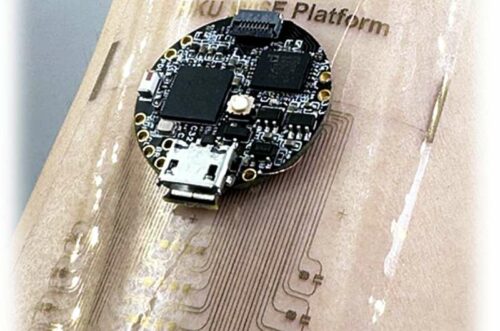Researchers at the University of Hong Kong (HKU) have developed a breakthrough wearable device that integrates stretchable organic electrochemical transistors (OECTs) designed to be worn comfortably on the skin for real-time data processing.

The development of this AI-powered wearable by HKU’s researchers incorporates machine learning algorithms for precise predictions, and is aimed at a wide range of users. Health-conscious individuals, athletes, and patients needing continuous health monitoring could greatly benefit from this technology. It is also suited for healthcare providers seeking real-time data for decision-making, making the device crucial for digital health and personalized medicine.
Shiming Zhang, a co-author & assistant professor (electrical and electronic engineering), HKU emphasized the potential impact, stating, “Our goal is to embed machine learning capabilities into wearables to enable in-sensor neuromorphic computing or edge-computing capabilities. This allows for real-time, edge-based decision-making, which is vital for closed-loop theranostics and relevant to AI-driven medicine.”
The researchers developed their AI-powered wearable by designing a stretchable array of OECTs and combining them with machine learning algorithms. These algorithms were trained on biomedical datasets, allowing the device to predict users’ physiological states with precision. The device’s ability to process data on the spot is a game-changer for real-time health monitoring and decision-making.
Zhang highlighted several challenges in the process: “To merge our algorithms with wearables, we face three main challenges: collecting higher-quality health data for precise training, suppressing motion artifacts with soft skin and thus minimize data noise, and customizing an algorithm for maximum computational efficiency.” By using OECTs, the team was able to minimize noise caused by motion, enhance muscle signal quality, and employ an efficient AI algorithm known as reservoir computing.
The stretchable transistors developed for this wearable device consist of an elastomeric substrate, semiconducting polymers, and gold-based electrodes. These components allow for over 50% stretchability, making the device both flexible and durable. The transistors, which are as small as 100 μm, were fabricated using inkjet printing, enabling a cost-effective and scalable manufacturing process.
In initial tests, the wearable system, compatible with smartwatches, demonstrated impressive performance. It accurately predicted hand gestures with about 90% accuracy, showcasing its potential in real-world applications. Zhang described the platform, known as WISE (Wearable, Intelligent, and Soft Electronics), as a versatile tool for various health-related applications.
This breakthrough in wearable technology promises to enhance health monitoring, offering more comfortable, efficient, and adaptable solutions for both patients and healthcare providers.






